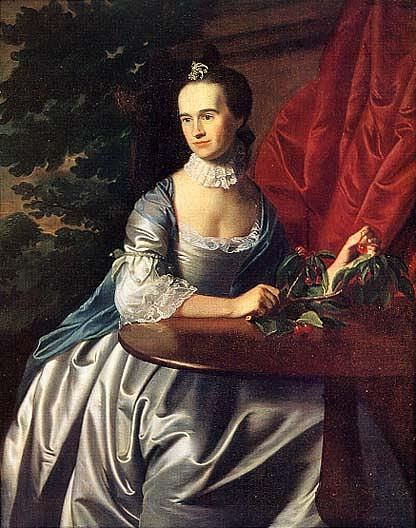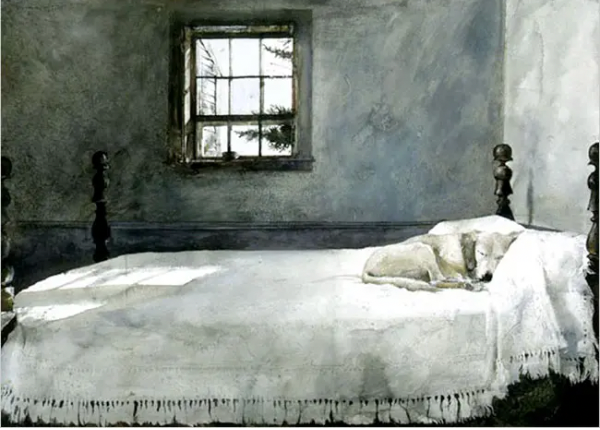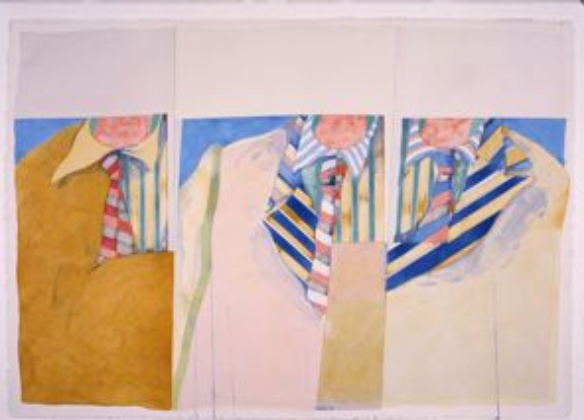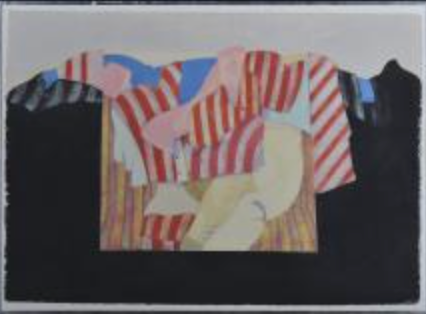- Annie Mason

- 5 min read
This series will introduce artists associated with certain states. This is my home state of Massachusetts.
No doubt about it. The eighteenth-century artist followed the pursuits of their English counterparts: paint the rich, the nobleman, England's penchant for showing the client in extravagant surroundings, wearing silk and the finest fur. No longer the preserve of royalty, commissioned portraits — of oneself or one’s ancestors — became a coveted symbol of wealth and status.
Gilbert Stuart
December 3, 1755 - July 9, 1828
The artist's dream in this new world was to make that commission an absolute. How on earth did Gilbert Stuart land the task of painting George Washington?

Still, who is the nobler here? Stuart wanted to paint Washington, for he expected that he could make a "fortune" on images of the Revolutionary War hero and American leader. At the time the president sat for Stuart, the artist tried to relax his sitter, offering, "Now, sir, you must let me forget that you are General Washington and that I am Stuart, the painter," to which the president responded, “Mr. Stuart need never feel the need for forgetting who he is and who General Washington is.”
Stuart produced portraits of over 1,000 people, including the first six Presidents.[4] His work can be found today at art museums throughout the United States and the United Kingdom, most notably the Metropolitan Museum of Art and Frick Collection in New York City, the National Gallery of Art in Washington, D.C., the National Portrait Gallery, London, Worcester Art Museum in Massachusetts, and the Museum of Fine Arts, Boston.[5]
Washington must have been pleased because, after this initial portrait of Washington, Stuart made more than one hundred copies for American and European patrons eager to own an image of the illustrious sitter.
Norman Rockwell
1894 - 1978

Norman Rockwell is designated "Massachusetts State Artist" (I did not know there was such a thing).
Here lies a conundrum. Was he a "real" artist? Or (just) an illustrator?
Aside: This is the world that I live in. My work is very illustrative. So, am I not a real artist? Where does that rank start? In art school?
I found this definition: "The biggest difference between illustrator and artist is the purpose of the work. Illustrators create images to help promote a function or a product. Artists create art to express emotions. In other words, an illustration is a visual explanation of the text, [which] almost always comes with context."
Me, Annie Mason, an artist, says This ⬆️ is hogwash!
Norman Rockwell was an illustrator and a great artist. If you want to dig deeper into this conundrum, a good place to start: Michaelangelo: Painter or Illustrator. (The title itself gives you a clue, doesn't it?) Norman Rockwell is cited in the article, and the author makes a great point: "If his famous Saturday Evening Post cover of the Thanksgiving dinner, entitled Freedom from Want, hung in a posh New York City art gallery, then it would have been considered fine art. But collectors snubbed Rockwell as a sentimental illustrator. The Author, Rachael McCampbell, continues: "Yet ironically, Rockwell’s Saying Grace (1951) sold at Sotheby’s in 2013 for $46 million. Does that sort of price tag elevate Rockwell to the fine art status?" Exactly!!
Yet. Here we go. There are probably a lot of readers here who can point out a Norman Rockwell painting.
Rockwell was born in New York City in 1894. At age 14, Rockwell enrolled in art classes at The New York School of Art (formerly The Chase School of Art).
Rockwell found success early. He painted his first commission of four Christmas cards before his sixteenth birthday. While still in his teens, he was hired as art director of Boys’ Life, the official publication of the Boy Scouts of America, and began a successful freelance career illustrating a variety of young people’s publications.
22-year-old Rockwell painted his first cover for The Saturday Evening Post, the magazine Rockwell considered the “greatest show window in America.” Over the next 47 years, another 321 Rockwell covers would appear on the cover of the Post.

In 1943, inspired by President Franklin Roosevelt’s address to Congress, Rockwell painted the Four Freedoms paintings. They were reproduced in four consecutive issues of The Saturday Evening Post with essays by contemporary writers. Rockwell’s interpretations of freedom of Speech, Freedom to Worship, Freedom from Want, and Freedom from Fear proved enormously popular. The works toured the United States in an exhibition jointly sponsored by the Post and the U.S. Treasury Department and, through the sale of war bonds, raised more than $130 million for the war effort.
In 1953, the Rockwell family moved from Arlington, Vermont, to Stockbridge,
Massachusetts. Six years later, Mary Barstow Rockwell died unexpectedly. In collaboration with his son Thomas, Rockwell published his autobiography, My Adventures as an Illustrator, in 1960. The Saturday Evening Post carried excerpts from the best-selling book in eight consecutive issues, with Rockwell’s Triple Self-Portrait on the first cover.
I grew up in Western Massachusetts, and the Norman Rockwell Museum is in Sturbridge. If you are traveling in this area, this museum is a delight. Rockwell’s large-scale original paintings are displayed, and you will discover the highly relatable world of American Illustration – the art that tells our stories. There’s always something new to enjoy, with ten galleries of ever-changing special exhibitions, engaging programs, and a magnificent scenic 36-acre campus.
James Abbot McNeill Whistler
1834 - 1903

Who doesn't know this lady? Why it's Whistler's Mother (the colloquial name), actually titled Arrangement in Grey and Black No. 1, painted in 1871. The subject is the artist's mother, Anna McNeill Whistler. The work was shown at the 104th Exhibition of the Royal Academy of Art in London (1872) after coming within a hair's breadth of rejection by the Academy.
Often parodied, the painting has been featured or mentioned in numerous works of fiction and within pop culture. These include films such as Sing and Like It (1934), The Fortune Cookie (1966), The Rocky Horror Picture Show (1975), Babette's Feast (1986),[13]Bean (1997), I Am Legend (2007), and Cloudy with a Chance of Meatballs 2 (2013).
Theodor Seuss Geisel - "Dr Seuss"
1904 - 1991
American children's author, political cartoonist, illustrator, poet, and filmmaker. He wrote and illustrated more than 60 books under the pen name Dr. Seuss. In 1927, he left Oxford College to begin his career as an illustrator and cartoonist for Vanity Fair, Life, and various other publications.
Geisel's art translated into many other media: Film, stage, and television specials.
Lisa M. Greenfield
Sculptor

Lisa M. Greenfield is a Boston artist who creates public art sculptures and installations, as well as paintings, graphic design, and urban planning. Created in conjunction with Daniel J. van Ackere, her most famous work, Starry Nights, is an installation under a bridge in Fort Point; thousands of LED bulbs light up the underpass. Though the project was only supposed to be up for eight weeks, residents enjoyed it so much that it will be permanent for the next ten years (from 2014 to 2024).
If you couldn’t find any twinkling blue LED lights at Target at Christmas time in 2009, that was because artists Lisa Greenfield and Daniel J. van Ackere, armed with a budget of $1000 from the Fort Point Arts Community (FPAC), bought out the entire stock from about a dozen stores in the Greater Boston area.
The installation is best viewed from A Street at Summer Street (between Congress Street and Melcher Street) in the Fort Point Channel neighborhood of South Boston.
Books about artists in this post
Pin it, please, or comment below this post.



























